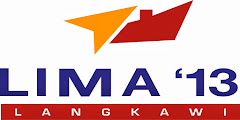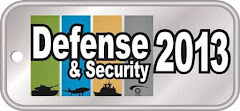Thales offers RBS70NG (photo : Shephard)
The topic of ground-based air defence (GBAD) and integrated air defence attracted much attention at Land Forces 2016 in Adelaide, although potential vendors are awaiting an RfT to learn more about how Australia will approach this jigsaw.
The 2016 Defence White Paper called for a deployable short-range GBAD system to replace the Saab RBS 70 MANPADS by the early 2020s. Furthermore, new medium-range GBAD missiles will be acquired in the mid-to-late 2020s. These contribute to project Land 19 Phase 7B.
The sentiment of industry is that an RfP for Land 19 Phase 7B will appear in late 2016/early 2017. The previously issued RfI sought a sensor suite, effector suite (i.e. missiles) and C4I system that can absorb the existing functionality of Phase 7A.
There is considerable interest from vendors. For example, a spokesman confirmed to Shephard that MBDA is proposing EMADS for the short-to-medium range, and Mistral MANPADS for the lower level.
The former, which stands for Enhanced Modular Air Defence Solutions, has options for both the CAMM and CAMM-ER, which give a layered defensive range of 25km for the former and 45km for the latter. The UK is introducing the CAMM, which uses a soft vertical launch, as its Rapier replacement.
MBDA offers EMADS (photo : MBDA)
Importantly, Australia already has a foundation upon which to build a capable air defence network, which is what Saab is counting on for further involvement. Australia has the RBS 70, recently updated with IFF Mode 5, and Giraffe AMB radars.
Australia purchased the Giraffes plus SRCTec Light Counter-Mortar Radars as part of Land 19 Phase 7A as an urgent requirement for counter-rocket, artillery and mortar (C-RAM) purposes to protect troops in Afghanistan. However, these give only a sense and warn capacity, with no ability to kill incoming rounds.
These could form the basis of a more expansive system, a Saab Australia spokesman informed Shephard. ‘A little extra work can expand capability considerably,’ he said, plus a layered system could be phased in step by step. For example, the 9LV combat management system used on the navy’s upcoming Air Warfare Destroyers could be integrated.
Saab is also offering the RBS 70NG, which adds an auto-tracker, as an upgrade. Indeed, it exhibited a scale model of a three-tube launcher mounted on a Thales Hawkei vehicle (pictured above). An associated Giraffe 1X radar could also be mounted on a Hawkei to give the Australian Army a mobile air defence capability.
Rheinmetall hopes to cooperate with Saab in offering its 35mm Revolver Gun, but no firm agreement is yet in place.
Thales is another potential bidder for this GBAD programme.
Rafael offers Iron Dome (photo : Defense Update)
Earlier this year Australia gave a restricted briefing to Boeing, Lockheed Martin, Northrop Grumman and Raytheon about Air 6500. This indicates that Australia is looking for an American company to oversee this two-phase project.
Northrop Grumman indicated it was working towards an MoU with Saab, as well as exploring various opportunities to work with other partners. Northrop Grumman is prime integrator for the US Army’s Integrated Air and Missile Defense Battle Command System (IBCS).
Another contender is Rafael with a solution based on Iron Dome, with the system achieving a 90% interception rate to date in Israel. A spokesman told Shephard it is seeking an American partner, since Australia prefers the latter to integrate C4I.
Rafael also has a naval version known as C-Dome that could work with Iron Dome, which uses IAI Elta ELM-2084 radars.
Rafael said it had a good relationship with Australia and is happy to share technology. It is currently finding a local partner with which to work, and it envisions opportunities to cooperate with companies such as CEA and EOS.
Raytheon and Kongsberg offers NASAM2 (photo : sisuauto)
Raytheon and Kongsberg are offering its improved NASAMS 2 system based on the AIM-120 AMRAAM. Raytheon claims it can offer 50% local content by incorporating a truck-based CEA Technologies radar. The collective system will be known as Medusa in the Australian market.
There is the potential for Land 400 Phase 2 and 3 vehicles to contribute to air defence as well. For example, BAE Systems’ turret for the AMV35 and CV90 includes Saab’s UTAAS sight originally intended for the air defence role. Guns on the Rheinmetall Boxer and Lynx can fire airburst munitions against air targets too. Indeed, Rheinmetall even showed a picture of a Boxer hull fitted with a 35mm Revolver Gun at Land Forces 2016.
Enormous potential exists for Australia to create an advanced, integrated air defence network under these two programmes. It is possible for Australia to be either too ambitious or not ambitious enough in its requirements.
It will thus be interesting to see what approach the country takes, with the release of the Land 19 Phase 7B RfT set to shed much-needed light on the thinking of Australian military planners.
(Shephard)














Tidak ada komentar:
Posting Komentar